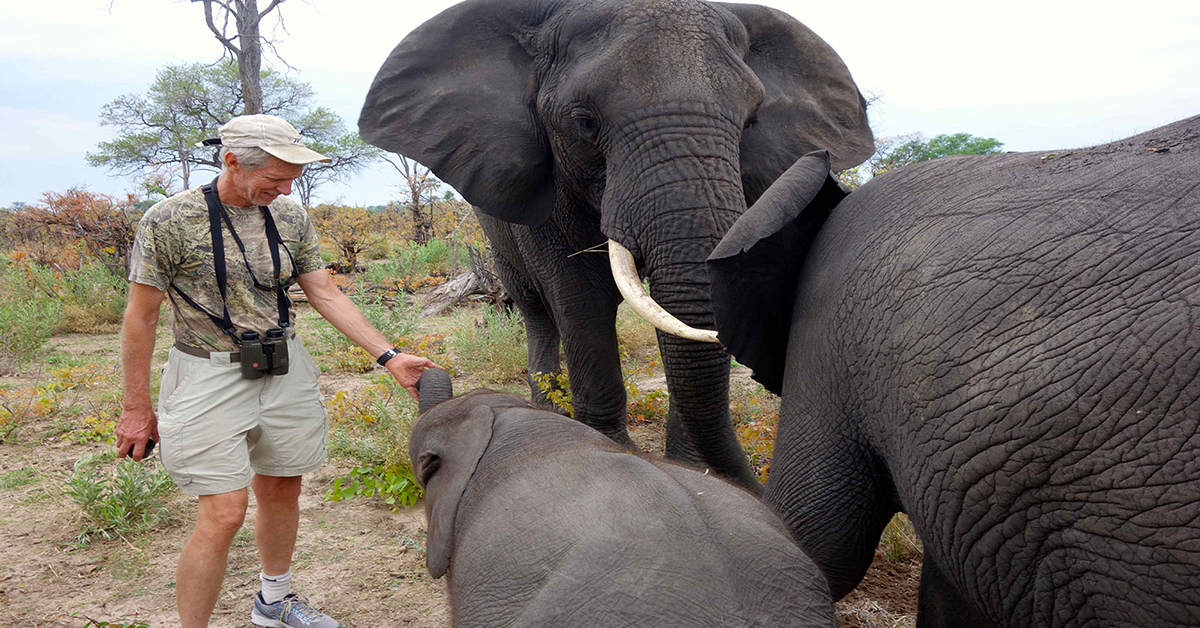How the World Wildlife Fund Uses Thermal-Equipped Drones in Africa

George Powell, Director of Wildlife Conservation at World Wildlife Fund shares how they are using drones equipped with thermal to aid the organization's research and conservation efforts of large and endangered species in Africa.
Q: Tell us about your project?
A: We are testing the limits of small drones as a tool for managing national parks and other protected areas while working to expand those limits through strategic R&D. We have focused mostly in African savanna, where populations of large animals, including elephants, rhinos, and lions, are experiencing such severe rates of decline that they will likely disappear if these trends are not reversed.
Q: How is FLIR’s drone-based thermal technology involved in the project?
A: FLIR thermal technology is at the very core of this project. Adapting this technology to park management is opening up huge opportunities. Most poaching occurs at night, when poachers have largely been immune to detection and able to operate freely – until now. Thermal technology is changing that paradigm. Similarly, detecting and counting animals is potentially more accurate at night when they are out from under the shade of vegetation, feeding in the open. If FLIR sensors can be armed with backend intelligence that detects and recognizes species, something we and others are working on, drones will be able to collect better data at a fraction of the cost of current methods.
Q: Since implementing FLIR thermal cameras, has it made an impact on your anti-poaching and wildlife observation?
A: In numerous ways, and we are just getting started. Again, being able to detect warm bodies at night has tremendous potential. But beyond actual detection, we are learning that an important impact of the drones is deterrence. Poachers tend to be unnerved by the knowledge that a drone that can see in the dark, but is invisible to them, is being launched.
One of our current goals is making sure that we keep accurate data on the use of the drones to allow us to measure their impact and compare the effectiveness of different platforms and sensors. As data collection improves, we will learn what works best and where R&D can have the greatest impact.
A: The first night I watched video coming in real-time from a drone, I was amazed by the animal life that came into view – a whole herd of elephants invisible without the eyes of thermal were remarkably conspicuous. I was immediately struck by the power of the tool – and I realized how FLIR vision would help not only in detecting poachers, but by making it safer for the rangers to operate at night. Think of those guys trying to track poachers at night when they have no idea what animals might be in their path – lions, elephants, buffalos and hippos can be the most dangerous when approached undetected in darkness. An eye in the sky is a valuable asset.
 Q: How do you see this affecting the future of anti-poaching and the way we track animals and their behavior?
Q: How do you see this affecting the future of anti-poaching and the way we track animals and their behavior?
A: As a chief ranger told me in Kenya – “we control the day, but the poachers still control the night.” The only way I see that changing is through the introduction of thermal or night-vision technology.
Drones with better batteries and ever smaller, more powerful sensors will ultimately play a key role in driving that change. And, as video analytics improve, picking out the poachers and the animals they intend to poach will become easier. These technological advances will play a critical role, not only in combating poaching, but perhaps, more importantly, allowing managers to monitor their animals at night to mitigate human wildlife conflict and to generate the information that will allow them to make the best management decisions.
Learn more about FLIR and our work with the World Wildlife Fund here.

